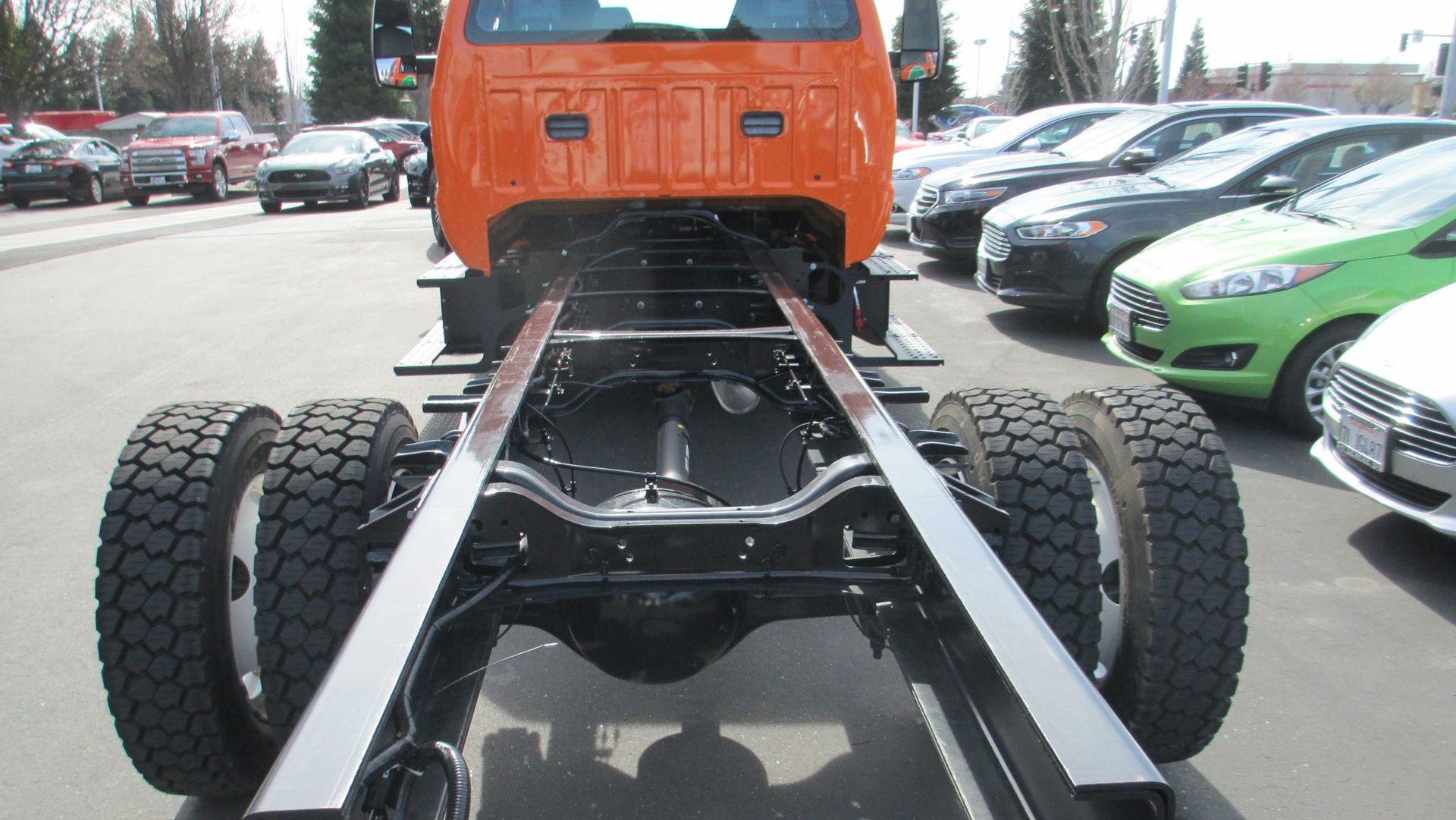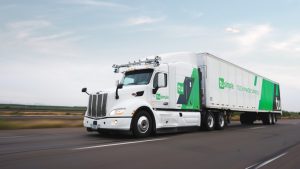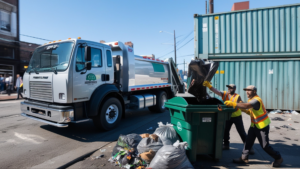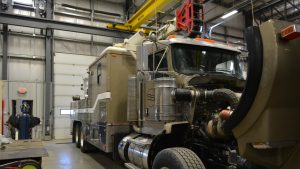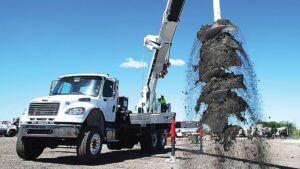Truck body styles vary widely to suit different needs and preferences. Here are the most common types:
1. Regular Cab
A regular cab truck has a single row of seats and two doors. It offers the most compact cabin space, prioritizing the truck bed’s length. Ideal for work purposes where more cargo space is needed than passenger space.
- Features:
- Single row of seats, typically seating 2-3 people.
- Two full-sized doors.
- Maximum bed length, often up to 8 feet.
- Benefits:
- Best for those needing maximum cargo space.
- Simpler and often less expensive.
- Easier to maneuver and park due to shorter overall length.
- Use Cases:
- Ideal for work environments like construction, farming, and delivery services where cargo space is more critical than passenger space.
- Great for towing with a focus on cargo over passengers.
2. Extended Cab
This style features two full-sized front doors and smaller rear doors that open backward, commonly called “suicide doors.” It has an extra row of seats but with limited legroom. Suitable for those who occasionally need to carry more passengers but still prioritize cargo space.
- Features:
- One and a half rows of seats, accommodating 4-5 passengers.
- Two full-sized front doors and two smaller rear doors.
- Mid-length bed, typically around 6-7 feet.
- Benefits:
- Offers additional passenger space without sacrificing too much bed length.
- More versatile for mixed use of passengers and cargo.
- Use Cases:
- Suitable for those who occasionally need extra seating but still require a sizable bed for tools and materials.
- Popular with tradespeople who need to transport a small crew along with equipment.
3. Crew Cab
A crew cab truck has four full-sized doors and a spacious second row of seats, offering ample legroom for passengers. Perfect for families or work crews needing to transport multiple passengers comfortably along with cargo.
- Features:
- Two full rows of seats, providing ample space for up to 6 passengers.
- Four full-sized doors.
- Shorter bed length, usually around 5-6.5 feet.
- Benefits:
- Most comfortable for carrying passengers, with plenty of legroom.
- Family-friendly, suitable for long trips.
- Use Cases:
- Perfect for families or work crews needing to travel together.
- Ideal for those who balance passenger comfort with the need to carry cargo, such as contractors or outdoor enthusiasts.
4. Double Cab
This style is a hybrid between the extended cab and crew cab. It has four doors like a crew cab but with smaller rear doors and less rear-seat legroom. Balances passenger space and cargo bed length, making it versatile for various needs.
- Features:
- Slightly smaller rear passenger area compared to the crew cab.
- Four doors, with rear doors often slightly smaller.
- Intermediate bed length.
- Benefits:
- Good balance between passenger space and cargo capacity.
- More affordable than a crew cab.
- Use Cases:
- Versatile for both family and work use.
- Popular for those needing more passenger space than an extended cab but not as much as a crew cab.
5. Chassis Cab
Essentially a truck with just a cab and chassis, allowing for custom modifications and installations such as flatbeds, utility beds, or other specialized equipment. Commonly used for commercial purposes where specific types of beds or equipment are required.
- Features:
- Basic cab and frame, no factory-installed bed.
- Allows for customization with various aftermarket beds.
- Benefits:
- Highly versatile for specific needs.
- Strong frame suitable for heavy-duty applications.
- Use Cases:
- Commercial use where specific beds or equipment need to be installed, such as flatbeds, dump beds, or specialized utility bodies.
- Ideal for custom business applications like ambulances, tow trucks, and delivery vans.
6. Flatbed Truck
Features an open flat bed without sides or a roof, allowing for easy loading and unloading of large or irregularly shaped items. Ideal for transporting oversized or heavy goods that do not fit within a traditional truck bed.
- Features:
- Flat, open bed with no sides or roof.
- Easy to load and unload from any side.
- Benefits:
- Versatile for carrying oversized or irregularly shaped loads.
- Can be fitted with side racks or other accessories as needed.
- Use Cases:
- Construction, agriculture, and landscaping for transporting heavy machinery, building materials, and bulk goods.
- Common in industries requiring frequent loading and unloading of large items.
7. Box Truck
Equipped with a fully enclosed cargo area or box attached to the chassis, providing protection from the elements. Often used for moving companies, deliveries, and transporting goods that need to stay dry and secure.
- Features:
- Enclosed cargo area, often a large, rectangular box.
- Accessible via rear and sometimes side doors.
- Benefits:
- Provides protection from weather and theft.
- Large cargo capacity, ideal for secure transport.
- Use Cases:
- Moving companies and delivery services.
- Transporting items that need to stay dry and secure, such as furniture, appliances, and perishable goods.
8. Dump Truck
Has an open-box bed hinged at the rear, allowing the front to be lifted to dump materials out. Commonly used in construction and landscaping for hauling materials like gravel, sand, and debris.
- Features:
- Open-box bed with hydraulic pistons to lift and dump contents.
- Typically heavy-duty construction.
- Benefits:
- Efficient for transporting and dumping bulk materials.
- Robust build for tough job sites.
- Use Cases:
- Construction and landscaping for hauling and dumping materials like gravel, sand, and demolition debris.
- Municipal use for waste management and road maintenance.
9. Tow Truck
Built to tow or haul other vehicles, often equipped with a winch and flatbed or wheel-lift system. Essential for vehicle recovery, towing, and roadside assistance.
- Features:
- Equipped with a winch, boom, or wheel-lift system.
- Often has a flatbed or integrated towing mechanisms.
- Benefits:
- Essential for vehicle recovery and transportation.
- Can handle a variety of vehicle sizes and conditions.
- Use Cases:
- Roadside assistance, towing services, and vehicle recovery.
- Transporting disabled or illegally parked vehicles.
10. Utility Truck
Fitted with various compartments and storage units for tools and equipment, often used by service professionals. Popular with electricians, plumbers, and other tradespeople who need to carry and organize tools and parts.
- Features:
- Fitted with compartments, toolboxes, and storage units.
- Often includes ladder racks and other accessories.
- Benefits:
- Keeps tools and equipment organized and secure.
- Enhances efficiency for service professionals.
- Use Cases:
- Electricians, plumbers, and other tradespeople.
- Utility companies and service fleets.
These different truck body styles are designed to cater to a wide range of needs, from personal use and family transport to commercial and industrial applications. Each truck body style offers unique advantages tailored to specific needs, from maximizing cargo space to providing comfortable passenger accommodations or enabling specialized functions for various industries.
